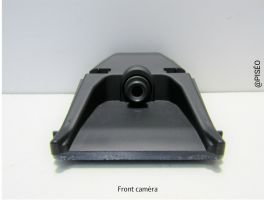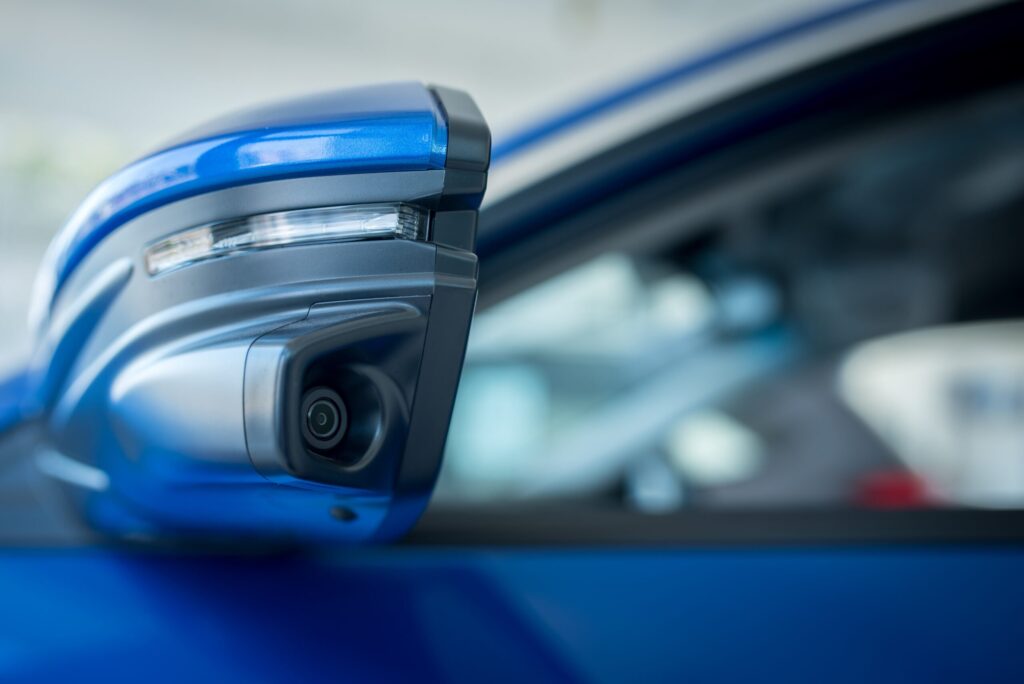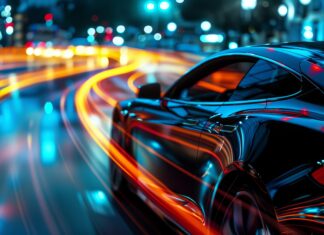In the automotive sector, the majority of road accidents are due to human error by the driver. Thus, it appears essential, in order to reduce the number of accidents, to provide the driver with assistance in order to inform him about his environment, warn him of a situation of imminent risk of accident, and possibly act on driving the vehicle in his place. The development of ADAS (advanced driver assistance systems) sensors aims to achieve this, and ultimately lead to the driving of the autonomous vehicle.
All ADAS systems mix sensors of different technologies, ranging from ultrasonic proximity detectors for parking assistance to blind-spot RADAR detectors and even LiDAR for the detection of obstacles in front of the vehicle. Moreover, camera-based ADAS sensors, such as the front camera system, provide a 360° view around the vehicle – and when installed inside the cabin, such as DMS and OMS, provide information on the driver’s state of alertness, the number of occupants, and whether their seat belts are properly fastened. To complement the camera-based ADAS systems, electronic rearview mirrors, or e-mirrors, offer the driver a better view of the outside environment from the cabin. These systems (also called CMS or SRVM according to car manufacturers) consist of a monitor in addition to a camera to present a field of observation to the driver in the best conditions.
Additionally, some ADAS sensors with cameras are being considered for installation in aircraft.
In all cases, these systems contribute to increasing the level of active and passive safety of a vehicle, and must ensure reliable and repeatable detection or measurement of their environment, in all conditions of use. They also must meet regulatory requirements and applicable standards.
To guarantee a high level of performance in increasingly broad uses, the needs for characterizing the performance of these systems are increasing.
PISÉO, an innovation and expertise center in optics and photonics, offers characterization services in our laboratory for ADAS systems that embed cameras.
- The “front camera” system is a device which is positioned behind the windshield, at the level of the interior mirror. It observes the space in front of the vehicle to read road signs such as speed limit, no overtaking, or end of construction. This system also makes it possible to provide information at night to the adaptive high-beam management system, by detecting entry into a built-up area and the presence of other vehicles coming in the opposite direction (or traveling in the same direction) in order to lower the headlight beams so as not to distract other drivers. Moreover, the front camera system can also detect lane markings to warn the driver of an unintentional crossing of a solid or dotted line. Finally, the system allows the detection of an obstacle which may appear in front of the vehicle, such as a pedestrian emerging from a line of vehicles parked alongside the road.
The tests and characteristics measured for these systems are described below. Some of the tests are performed in the visible and near IR ranges:
- • System field of view (FOV): controls the observation and detection space of the system.
- • Spatial resolution of the system: allows for measuring the spatial resolution of the system – that is to say, to determine the dimensions of the smallest object detectable by the system. This measurement is done through the measurement of the MTF.
- • The signal-to-noise ratio of the system: measures the detection power of the system according to the signal level it receives. This measurement is done by measuring the SNR.
- • Distortion: allows for measuring the distortion of the image delivered by the camera in order to take it into account in the detection algorithms. This is measured using a checkerboard pattern.
- • Color rendering – colorimetry: the colorimetry is measured on a Rezchcker chart. The color differences of the colored areas of the target are measured, and the values DeltaE00 and DeltaC00 are calculated.

Standards & regulations
To carry out the characterizations, PISEO experts rely on recognized test methods (international standards). We are also able to develop protocols and scripts in Python for carrying out specific tests. The list below presents a non-exhaustive list of standards controlled by our laboratory.
• ISO 12233: Electronic camera imaging — resolution and spatial frequency responses
• ISO 15739: Electronic camera imaging — noise measurements
• ISO 14524: Electronic cameras — methods of measurement of opto-electronic conversion functions
• ISO 7589: Photography — sensitometric illuminants — specifications for daylight, artificial light, and printer
Measurement and analysis equipment for cameras
PISEO’s test laboratory is equipped with all the equipment necessary to carry out the measurements mentioned above. The list below gives an overview:
• IMATEST v22.1 image-quality analysis software.
• Standard targets produced according to the ISO 12233 standard, or according to a specific protocol defined with our customer.
• IMATEST light sources with luminance uniformity greater than 90%, in the visible range (color temperature 3100K) and in the near IR (940 nm) for the backlighting of the test patterns.
• Collimators with 70° and 150° field-of-view angle, allowing measurements to be taken on staffs located at distances between 400 mm and infinity.
The CMS system (camera monitor system), also known as SRVM (smart rear virtual mirror), or even electronic mirror (e-mirror), generally consists of two cameras, display screens inside the cockpit, and an electronic control unit. It replaces traditional exterior mirrors to provide the driver with a better in-cabin view of the outside environment. The field of vision is wider, which improves visibility in poor weather or lighting conditions, and also helps to give safety alerts. Thanks to its lightness and streamlined shape, it also helps to reduce CO2 emissions and save energy.
The tests and characteristics measured on these systems are as follows:
• Magnifications: a measure of system magnification and aspect ratio.
• Sharpness and depth of field: determined by MTF measurement.
• Resolving power: the resolving power is measured by measuring MTF at several points in the field of view.
• Distortion: the geometric distortion measurement is performed on a checkerboard pattern.
• Contrasts: contrasts are measured in different camera illumination conditions (e.g., under glare) and different screen illumination conditions.
• Uniformity: directional uniformity and lateral uniformity are measured under daytime conditions with diffuse daylight.
• Artifacts: the analysis of the number of spots that appear on the screen when the camera is dazzled by an intense light source.
• Color rendering – colorimetry: the colorimetry is measured on a Rezchcker chart. The color differences of the colored areas of the target are measured, and the values ?E00 and ?C00 are calculated.
• Shades of gray: eight levels of gray are measured, and an analysis of their perception is carried out.
• Flicker: flicker measurement according to ISO 13406-2:2001.
• Latency time: measurement of the time between the appearance of a light signal in front of the camera, and its appearance on the system screen.
• Image formation time: the measurement of the image formation time is carried out according to the ISO 9241-305:2008 standard.

Standards and regulations
To carry out the characterizations, PISEO’s experts rely on recognized test methods (international standards). We are also able to develop protocols and scripts in Python for carrying out specific tests. The list below presents a non-exhaustive list of standards controlled by our laboratory:
Regulation No 46 of the Economic Commission for Europe of the United Nations (UNECE) — Uniform provisions relating to the approval of indirect vision systems and of motor vehicles with regard to the installation of such systems
ISO 16505: road vehicles — ergonomics and performance aspects of on-board cameras — requirements and test procedures
• ISO 15008: road vehicles — ergonomic aspects of transport information and control systems — specifications and compliance procedures for in-vehicle visual presentation
• ISO 15008: road vehicles — ergonomic aspects of transport information and control systems — specifications and procedures for visual presentation in the vehicle
• ISO 9241-305: ergonomics of human-system interaction — optical laboratory test methods for electronic display screens
• ISO 13406-2: ergonomic requirements for working on flat-panel display screens — ergonomic requirements for flat-panel displays
• ISO 12233: electronic camera imaging — resolution and spatial frequency responses
• ISO 14524: electronic cameras — methods of measurement of opto-electronic conversion functions
Measurement and analysis equipment for CMS systems
The PISEO test laboratory is equipped with all the equipment necessary to carry out the measurements mentioned above. The list below gives an overview:
• IMATEST v22.1 image-quality analysis software.
• Standard targets produced according to ISO 16505 or ISO 12233 standards, or according to a specific protocol defined with our customer.
• Multispectral lighting systems uniform in luminance and standard illuminants D55, D65. Direct lighting or backlighting.
• Westboro Photonics P1230U 12 Mpx video luminance meter, lenses, and Photometrika analysis software.
• Collimators with 70° and 150° field-of-view angle, allowing measurements to be taken on staffs located at distances between 400 mm and infinity.
• Agilent DSOX2004A-ATO-8966 70 MHz oscilloscope for latency measurement.
The DMS (driver monitoring system) is an assisted driver monitoring device. Its role is to alert the driver to pay attention to controlling the vehicle. The DMS is equipped with several functions, such as head movement analysis, gaze tracking, face recognition, eye blink frequency detection, and body position, all of which monitor the level of driver fatigue and distraction.
The OMS (occupant monitoring system) is a device similar to the DMS, but whose field of view is extended to the entire cabin of the vehicle and not limited to the driver alone.
The tests and characteristics measured on these systems are as follows. For the tests of the DMS systems, the measurements are carried out in the near IR range at 940 nm; on OMS systems, measurements are made in the visible and near IR ranges.
• System field of view (FOV): controls the observation and detection space of the system.
• Spatial resolution of the system: allows for measuring the spatial resolution of the system – in other words, to determine the dimensions of the smallest object detectable by the system. This measurement is done through the measurement of the MTF.
• The signal-to-noise ratio of the system: measures the detection power of the system according to the signal level it receives. This measurement is done by measuring the SNR.
• Distortion: allows for measuring the distortion of the image delivered by the camera, in order to take it into account in the detection algorithms. It is measured using a checkerboard pattern.
• Color rendering – colorimetry: the colorimetry is measured on a Rezchcker chart. The color differences of the colored areas of the target are measured, and the values ?E00 and ?C00 are calculated.
Standards and regulations
To carry out the characterizations, PISEO’s experts rely on recognized test methods (international standards). We are also able to develop protocols and scripts in Python for carrying out specific tests. The list below presents a non-exhaustive list of standards controlled by our laboratory:
• ISO 12233: electronic camera imaging — resolution and spatial frequency responses
• ISO 15739: electronic camera imaging — noise measurements
• ISO 14524: electronic cameras — methods of measurement of opto-electronic conversion functions
• ISO 7589: photography — sensitometric illuminants — specifications for daylight, artificial light, and printer
Measurement and analysis equipment for DMS and OMS systems
The PISEO test laboratory is equipped with all the equipment necessary to carry out the measurements mentioned above. The list below gives an overview:
• IMATEST v22.1 image-quality analysis software.
• Standard targets produced according to the ISO 12233 standard, or according to a specific protocol defined with our customer.
• IMATEST light sources with luminance uniformity greater than 90%, in the visible range (color temperature 31,00K) and in the near IR (940 nm) for the backlighting of the test patterns.
• Collimators with 70° and 150° field-of-view angle, allowing measurements to be taken on staffs located at distances between 400 mm and infinity.



